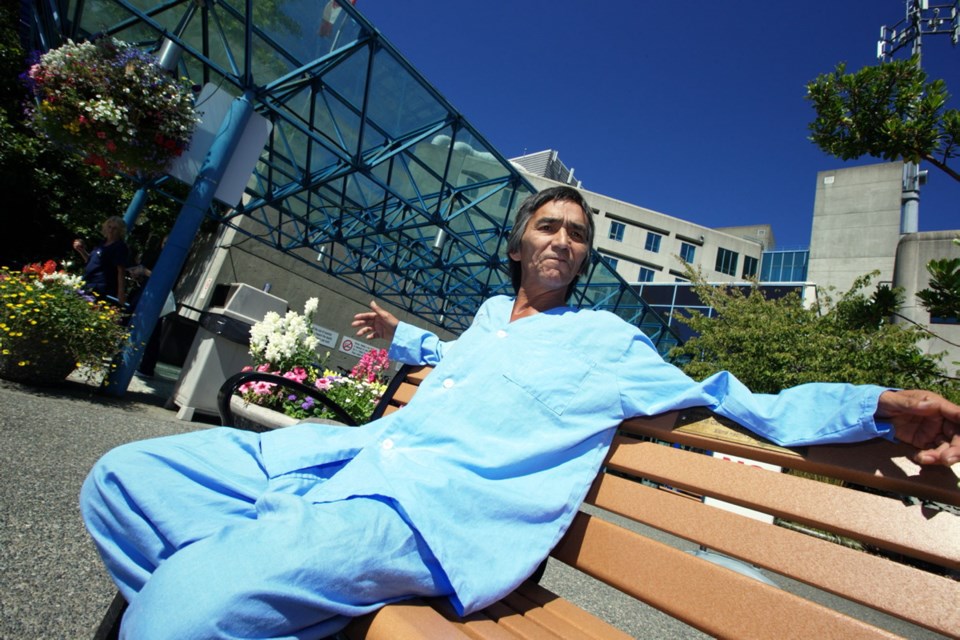Donald Peter Prevost settled in at the Cool Aid Society housing in Rock Bay last fall, a more comfortable place than the van he once called home.
Through winter cold and summer heat, Prevost slept in the van, owned by his daughter, outside of her home at Evergreen Terrace. He even stayed there as he recovered from gall bladder surgery.
It’s not that the formerly homeless man wasn’t welcome inside. But the subsidized housing policy at Evergreen Terrace did not allow for visitors longer than 14 days. With five kids, his daughter couldn’t afford to risk losing the family home, which meant he could not stay there.
“It wasn’t so bad,” said Prevost, a member of the Namgis First Nation from Alert Bay.
His daughter’s family lost their home and all their belongings, including his family photos, in a Nov. 18 fire that displaced 35 people.
That was the official count. It did not include people who were couch-surfing, staying with friends, or, like Prevost, sleeping in the parking lot.
Counted or not, indoors or not, he still lost his home to the fire.
“My heart just sank,” he said. “I had all my pictures of the kids when they were small.”
Aboriginal people such as the Prevost family face additional challenges in getting housing, whether they are a large family looking for space or a single person at risk of becoming homeless.
“The number of homeless who identify as aboriginal in Victoria is disproportionately higher than the approximate five per cent of the aboriginal population in sa���ʴ�ý. The stats range between 20 and 35 per cent and sometimes higher,” said Fran Hunt-Jinnouchi, executive director of Victoria’s Aboriginal Coalition to End Homelessness.
The organization holds talking circles to engage aboriginals facing homelessness about barriers and challenges they encounter.
“Participants have pointed to a number of challenges regarding securing housing: racism by rental property managers, feeling like they are under the microscope at all times, not having enough funds through social assistance to pay the rent, and having so many rules that they are likely to fail, especially in relation to addictions, curfews and having friends and family visit,” she said.
“I have heard this sentiment often: ‘I was in ministry care, then to ‘juvie’ as a teen, then to jail. Now I’m housed and the cameras, curfews, and rules are my prison.’ ”
Hunt-Jinnouchi said a perpetual lack of housing on reserves is part of the problem. It is not the only reason people leave aboriginal communities — many leave for work, education and other opportunities, but struggle in urban centres.
She added that affordable housing dollars do not trickle down to the people she works with as they are often geared toward families.
“The residue of colonialism, the Indian Act, and particularly residential schools and the cycle of being in foster care have had far-reaching inter-generational consequences,” she said.
“In many cases, indigenous people experience displacement and dislocation, physically and spiritually, and often feel like they don’t belong in either world — indigenous or western mainstream.”
M’akola Housing Society is a Langford-based organization that provides affordable housing for aboriginal people across the Island and in northern sa���ʴ�ý
“We work hard to meet the needs of the family members we serve by operating in a culturally respectful way. We like to promote that as an Aboriginal housing provider we do things differently,” said chief executive officer Kevin Albers. But this can be challenging, he said.
“Aboriginal people often have larger families and require larger homes with more bedrooms. There are also many single aboriginal people looking for housing and a lot of aboriginal affordable housing is geared toward families,” said Albers, noting affordable housing developers are aware of this and working to address it.
He said it is best for affordable housing providers like M’akola to have rules, such as a guest limit policy, because occupancy helps determine subsidies and there are occupancy standards and safety regulations for the homes.
“Families qualify for affordable housing through a calculation of household income and family composition. Which ensures our homes and the families we house are not overcrowded,” he said.
For Prevost and his family, it would be ideal to have a larger home either through ownership or in a subsidized development.
That way, he’d get to spend more time with his grandchildren and pass the days with company, he said.



